Top 11 security awareness posters with messages that STICK
The importance of security awareness in modern business practice can’t be overstated. It needs to be a priority in every security plan. Each employee is a front-line defender against incoming threats, and the danger comes in the most unexpected way. That’s why so much money is put into security awareness training for employees.
Unfortunately, it only takes one careless decision on the part of an employee to roll out the red carpet for hackers and scammers. While the importance of security awareness training should always be front and center, these posters, when properly hung, displayed, sent remotely, and deployed, can provide that little memory jog, that flash of recognition that could mean the difference between breached and secure.
Two year's worth of NIST-aligned training
Deliver a comprehensive security awareness program using this series' 1- or 2-year program plans.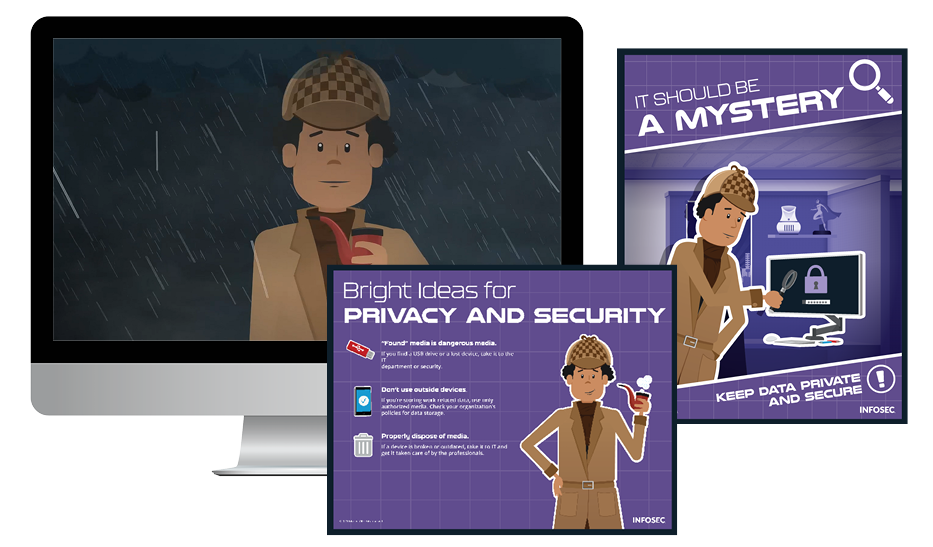
Here is a close look at 11 of the very best posters to remind your staff of the best security strategies for every situation. And stick around until the end to find out how to acquire 22 security awareness posters that you can use for your home, office, or to send to your team!
When you’re ahead of the game, you can’t be gamed
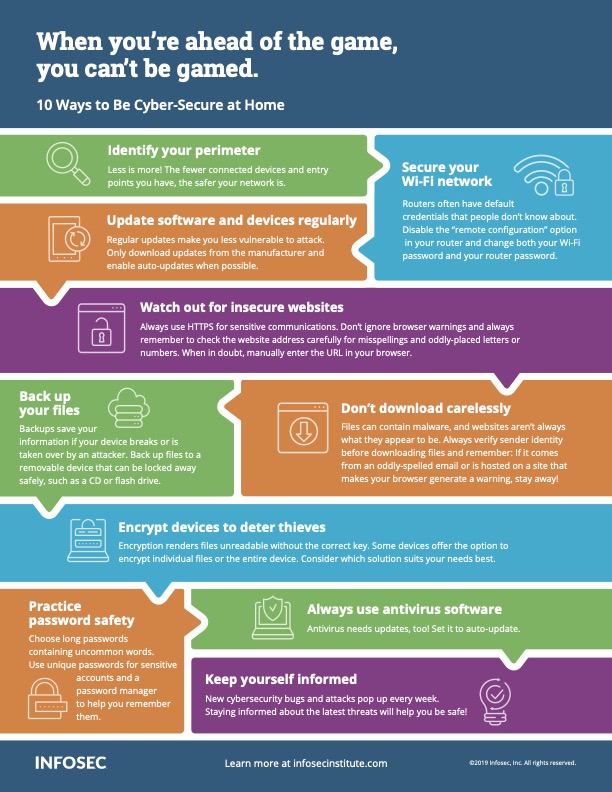
Face it — we’re all spending a LOT more time at home now, and many of us will be for the foreseeable future due to increased remote work. That means more interactions with the outside world will pass through your home network. Following these 10 steps will help you stay cyber secure at home, whether working, relaxing or staying in touch.
Protecting devices and media
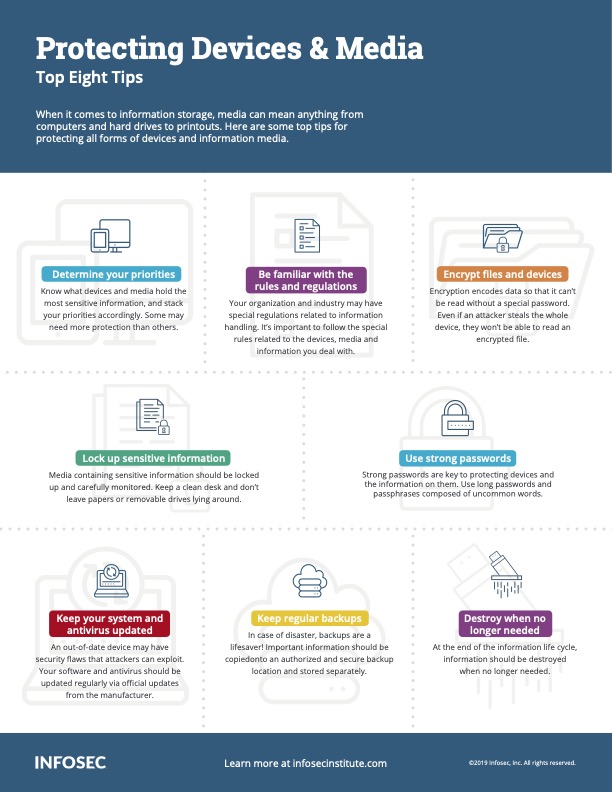
Even in the best of times, it pays to ensure that everything you own that connects to the internet is safe. But now that more of your life passes through devices, it’s up to you to keep them secure! This poster will give you some handy ways to get started. You can become safer in just minutes!
10 ways to protect your data
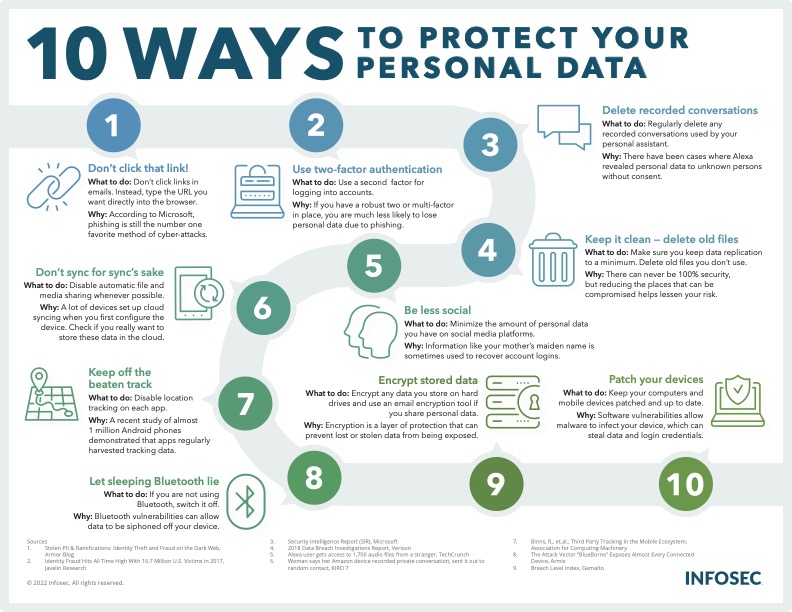
Once you’ve secured your home network and devices, ensure you know where all your data sits, how it’s stored, and who has access to it (or doesn’t). A few careful changes to your default settings and online experience can mean the difference between secure data and an insecure future.
Junk the junk
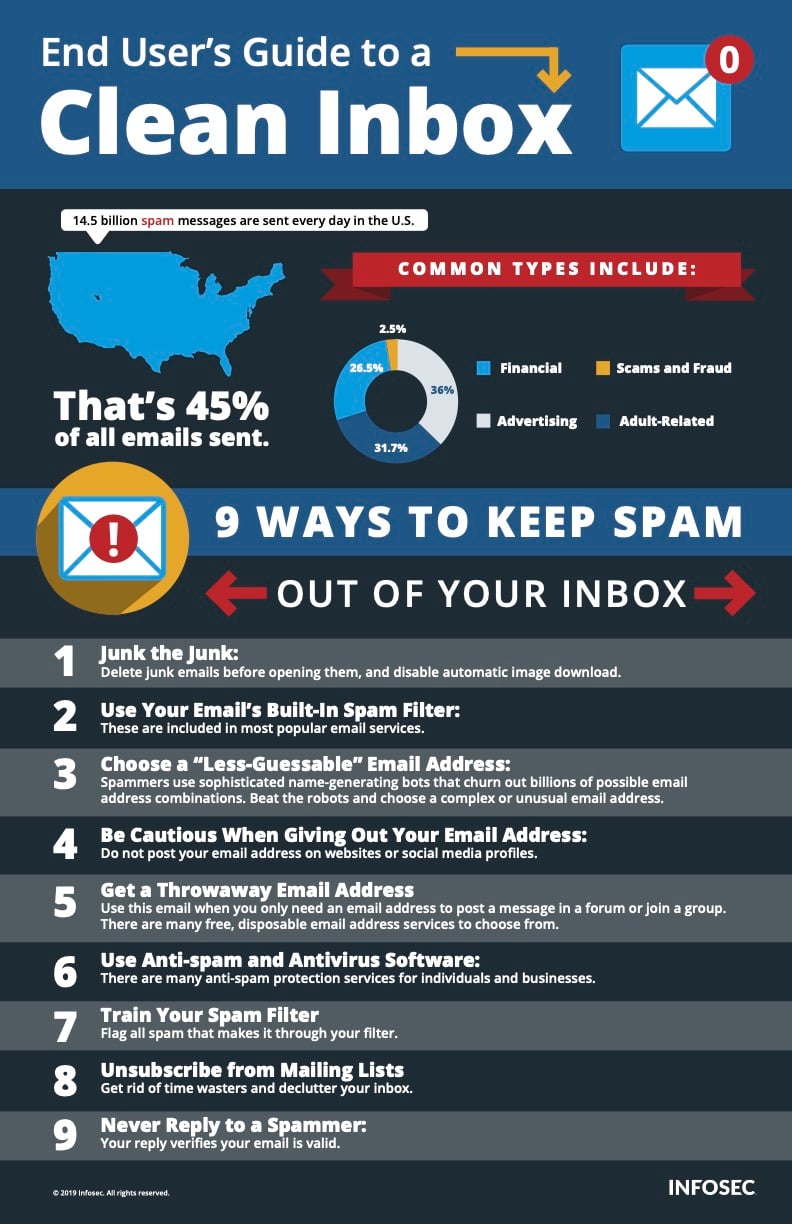
A lot of people don’t like Spam (the food), but NOBODY likes spam (the email nuisance). Nobody except cybercriminals, that is! Spam isn’t just annoying — it can contain scams and fraud attempts, and maybe even malware. Use this handy guide to keep your inbox clean and your peace of mind intact. Heck, maybe celebrate with a Spam sandwich! Or not.
How to recognize a malicious attachment
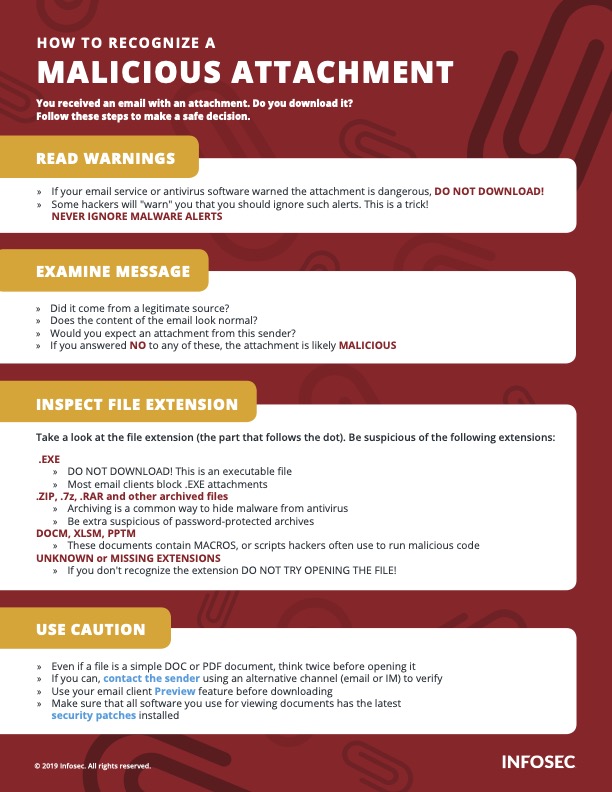
Spam isn’t the only thing hiding in your inbox; even the best spam filters can’t filter it all out. Emails with suspicious attachments can contain payloads that could destroy your computer, privacy, credit rating and worse. Don’t live in fear of malicious downloads: know how to spot them and safely kick ‘em to the trash!
Recognize and combat social engineering
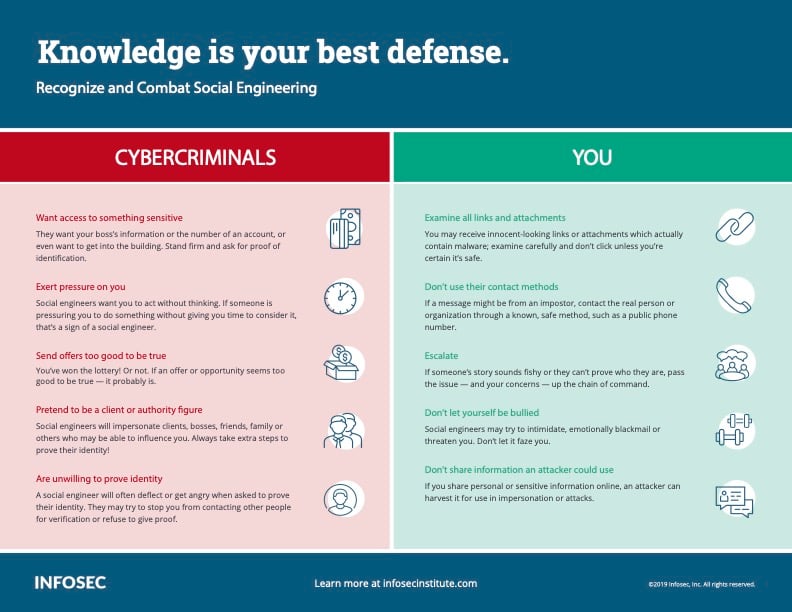
Social engineering can sneak things like malware or viruses past our defense systems. It does this because it’s designed to make us act before we think. It could be a critically unpaid invoice that needs attention, someone on the phone who needs the company card number for an emergency purchase, or your bank wanting to get your account number over the phone because of a suspected breach. These situations are red flags; study this poster, and you’ll have a plan of action you can execute in a heartbeat.
Common types of phishing attacks
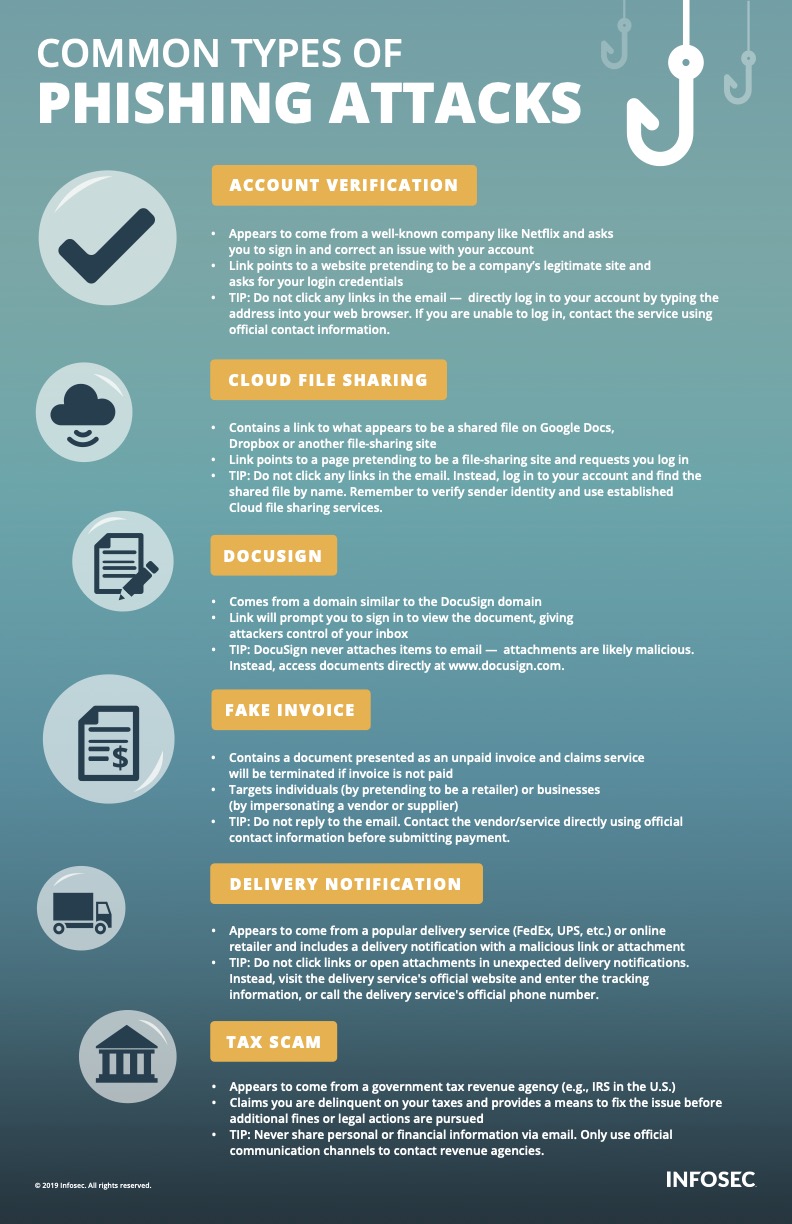
In the old days, you might get a strange, half-intelligible email with an Amazon logo in the corner, asking you to “please cilk here to verify your Amzaon account,” chuckle a bit, and send it straight to the trash. But it’s hard to deny that phishing emails have become more effective and can now be indistinguishable from the real thing! Bad spelling and unconvincing formatting are no longer the only warning signs you must look out for. Read this poster and get to the core of how phishing works and how to avoid it.
See Infosec IQ in action
![]()
Tips for spotting SMishing and vishing
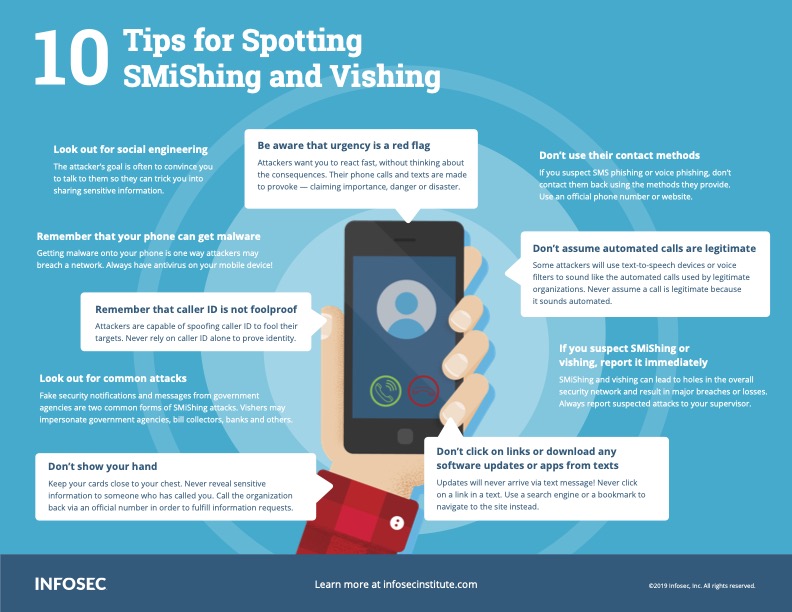
Most of us get half a dozen calls or texts a day from numbers that don’t look familiar or strange requests to update software on our phones. Before you hit that link, STOP — and check this guide to safe smartphone etiquette.
10 tips to recognize insider threats

With employees working from home and new hires coming on via unconventional ramp-ups, the possibility for insider threats is as strong as ever, maybe even more so. If you think something’s amiss in your company, check these common red flags to make sure there isn’t an enemy within.
Top nine indicators of Business Email Compromise (BEC)
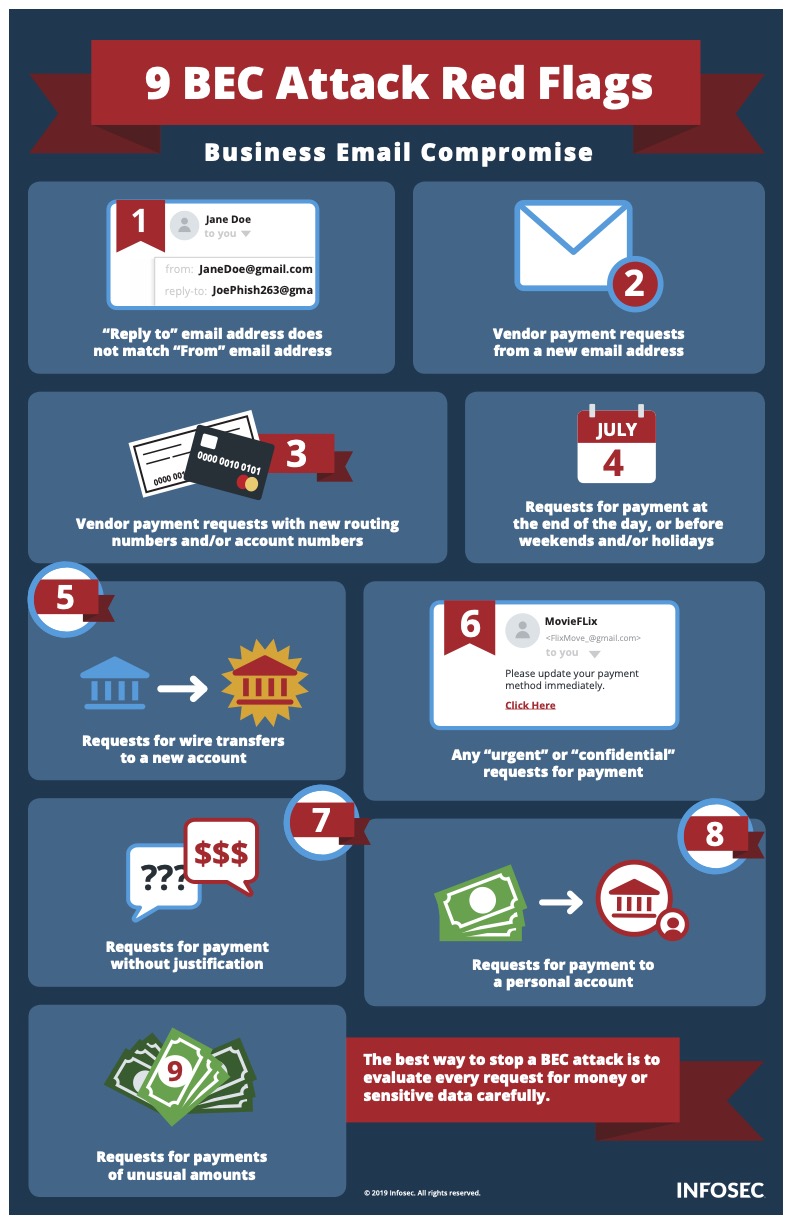
If your supervisor tells you he needs your time-off sheets from the past six months, that probably wouldn’t arouse much suspicion. But what if the head of the company emails you to say that he needs you to deposit several million dollars in an unverified bank account? It may be scary to push back against what seems to be a person in great authority, but as you can see in this poster, there are ways to tell if that request really is what it seems to be. Ask questions, get the answer directly from the person, and double-check everything. The fate of the company, its reputation, and even your job could be on the line!
Get six free posters
Reinforce cybersecurity best practices with six eye-catching posters found in our free poster kit from our award-winning series, Work Bytes.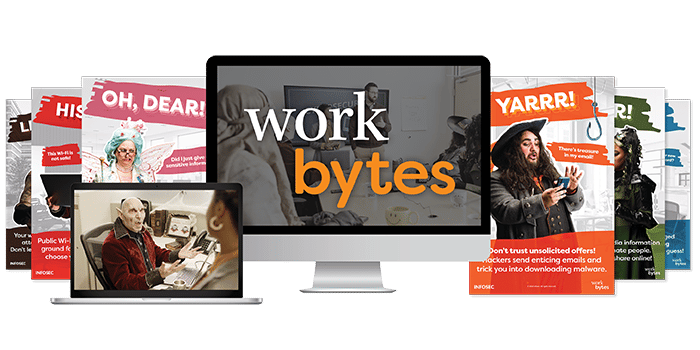
Conclusion
And just like that, you now have 11 more tools in your security toolbox! From phishing to cell phone scams to home network security, the future can look safer when you help your staff read and apply these tips to their work and home networks and make them a daily part of their cyber secure workday.
But here's even better news for the safety of your home and office: You can click above to get more than 20 security awareness posters, including the eleven highlighted above, that you can save, print and send to your team. Click the button above to get all twenty posters!




